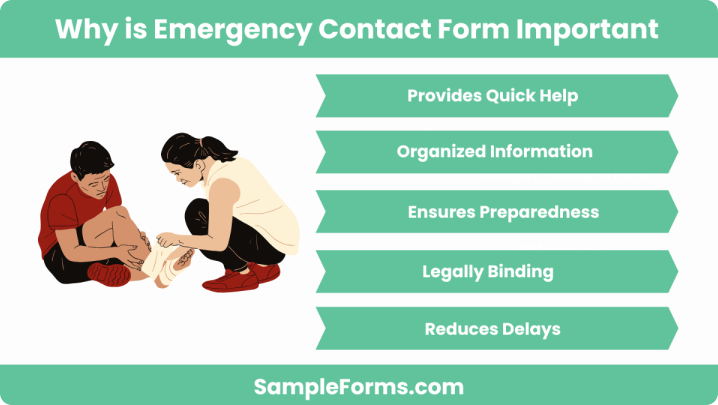Emergency Contact Form: Importance and Best Practices

An emergency contact form is an essential document in every workplace, ensuring that in case of an emergency, employers can quickly reach the necessary individuals to support employees.
Whether it’s a workplace accident, a sudden illness, or any other urgent situation, having up-to-date emergency contact information helps ensure the safety and well-being of employees.
This article explores the importance of emergency contact forms and best practices for creating and maintaining them.
What is an Emergency Contact Form?
An emergency contact form is a document where employees provide the names and contact details of individuals who should be contacted in case of an emergency.
These individuals are usually close family members or friends who can respond quickly to provide assistance or make decisions on behalf of the employee in urgent situations.
The form typically asks for basic contact information such as the name, relationship to the employee, phone number, and alternate contact details.
Why Is an Emergency Contact Form Important?

Best Practices for Creating and Managing Emergency Contact Forms
Maximize productivity of your business
Track employee productivity and simplify work with them
Tips for Employees Filling Out Emergency Contact Forms
- Provide Accurate and Detailed Information: When filling out the form, employees should ensure the contact details they provide are accurate and complete. This includes double-checking phone numbers, email addresses, and other relevant contact methods.
- List Multiple Contacts: Whenever possible, employees should list more than one emergency contact, including at least one secondary contact in case the first one cannot be reached.
- Note Medical Conditions (Optional): If relevant, employees may want to include any medical conditions or allergies that could affect their care in an emergency (e.g., asthma, diabetes, or severe allergies). This information should be given voluntarily and with consent.
Conclusion
An emergency contact form is an essential tool for ensuring the safety and well-being of employees in the workplace.
It provides a quick and reliable way for employers to reach the appropriate individuals in case of an emergency, helping to mitigate the impact of unexpected situations.
By creating clear, confidential, and up-to-date forms and educating employees on their importance, organizations can foster a safer, more prepared work environment.
Regularly reviewing and updating emergency contact information ensures that employees are always protected and supported, no matter the circumstances.
– The Monitask Team
Frequently Asked Questions
What should I do if my emergency contact information changes?
Employees should update their emergency contact information as soon as possible, especially after a significant life change like moving to a new address or changing phone numbers.
Do I need to provide medical information on the emergency contact form?
Providing medical information is optional but recommended if you have a condition that may need attention in case of an emergency. This information can be helpful for first responders or medical personnel, but it should be shared only with your consent.
Can I update my emergency contact form at any time?
Yes, employees should feel free to update their emergency contact form whenever there are changes, such as a change of contact information, emergency contacts, or health-related details. It’s important to ensure the information on file is always current.
What happens if I don’t fill out an emergency contact form?
Failure to complete an emergency contact form may delay response times in an emergency situation. Employers may ask employees to submit this form before starting work, especially if it is required by company policy or safety regulations. In some cases, a lack of emergency contact information could also affect your ability to participate in certain work activities, particularly those involving safety risks.



